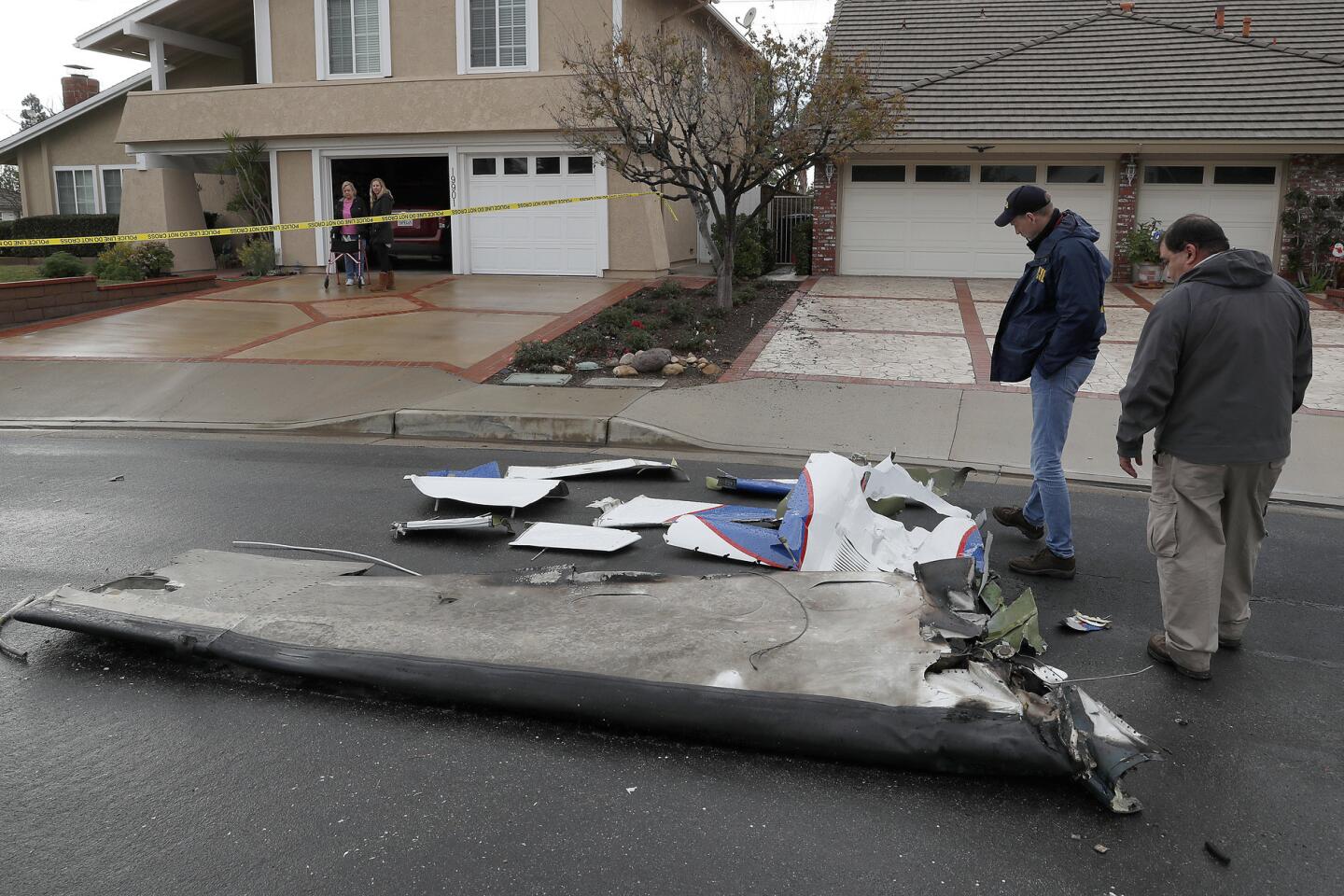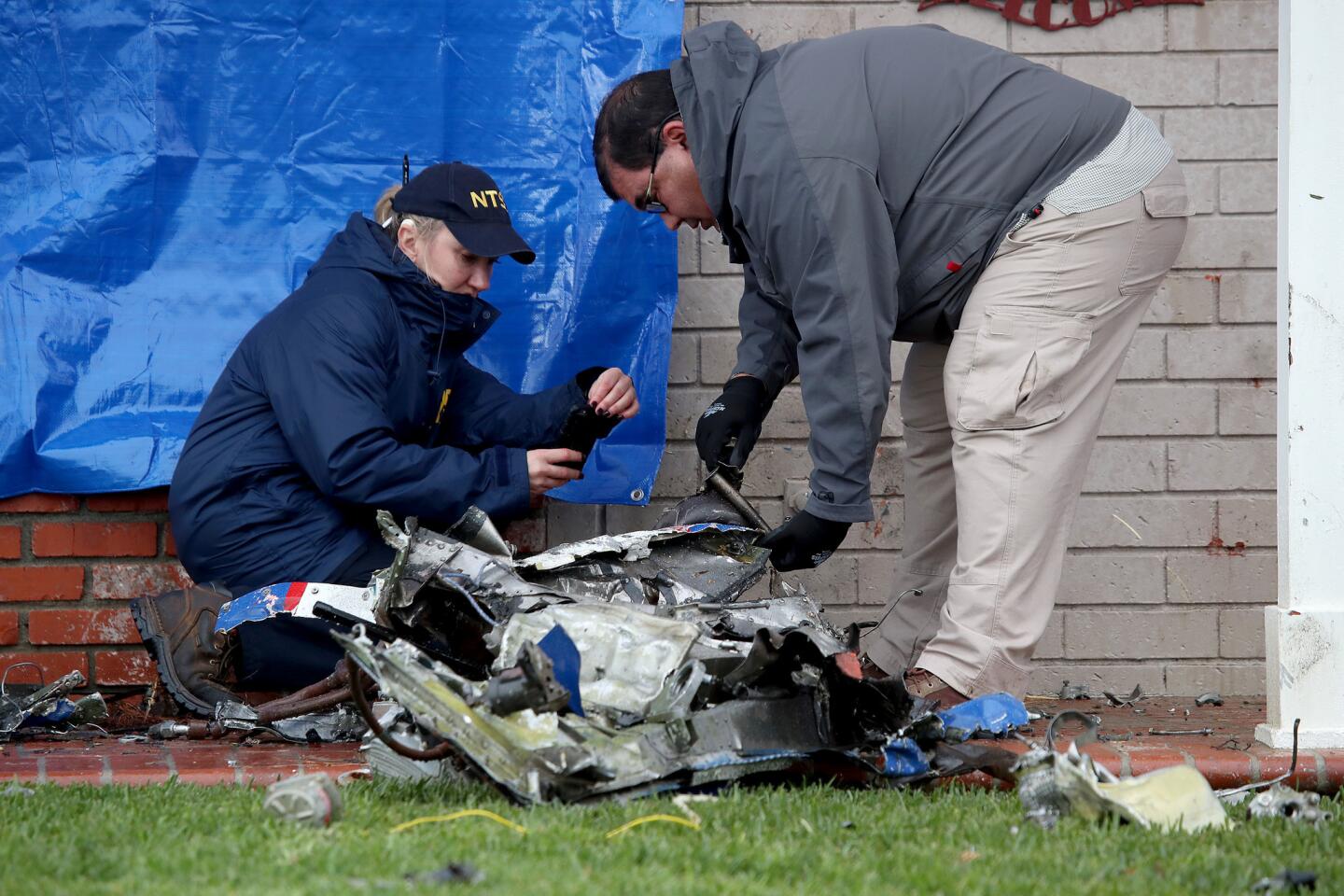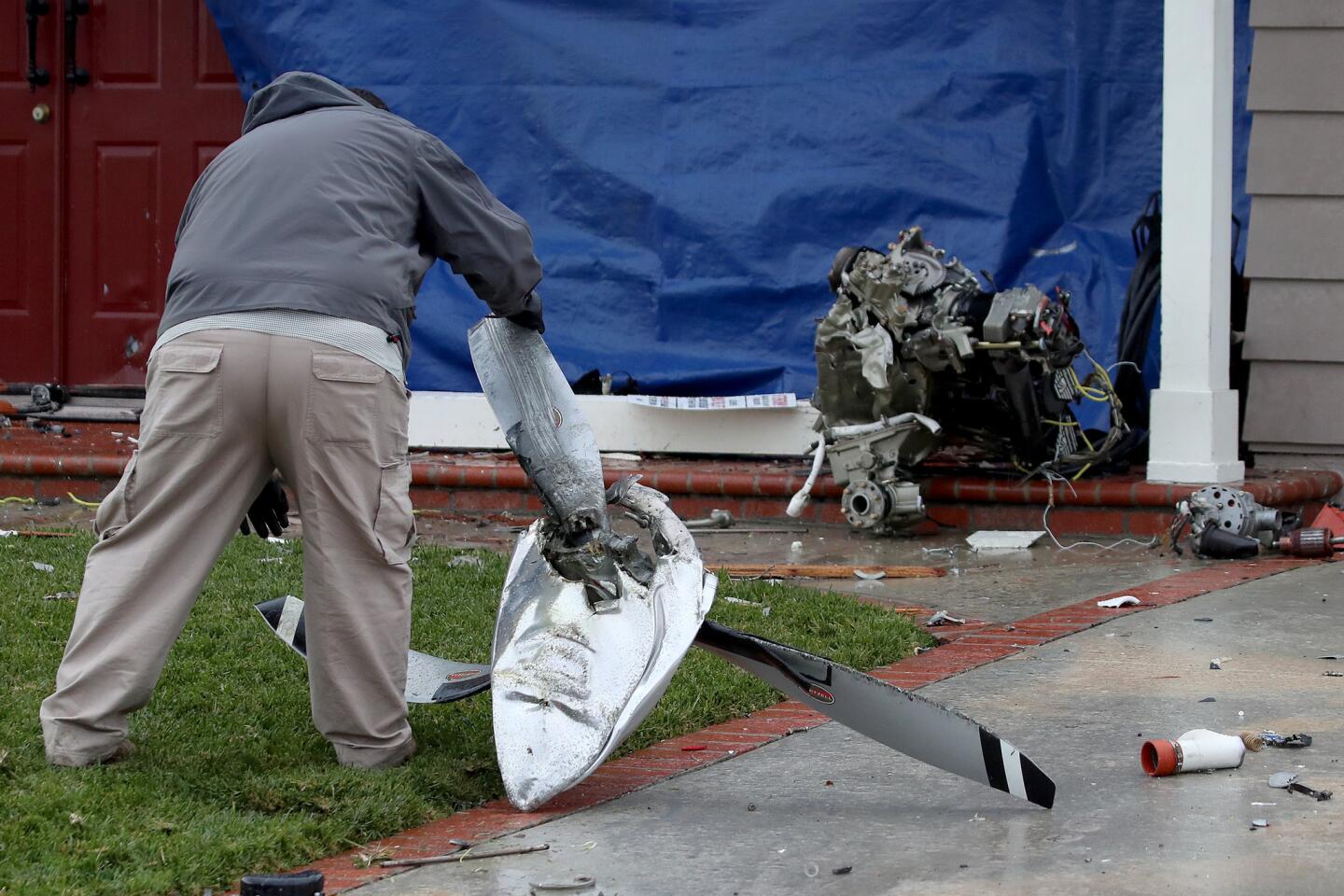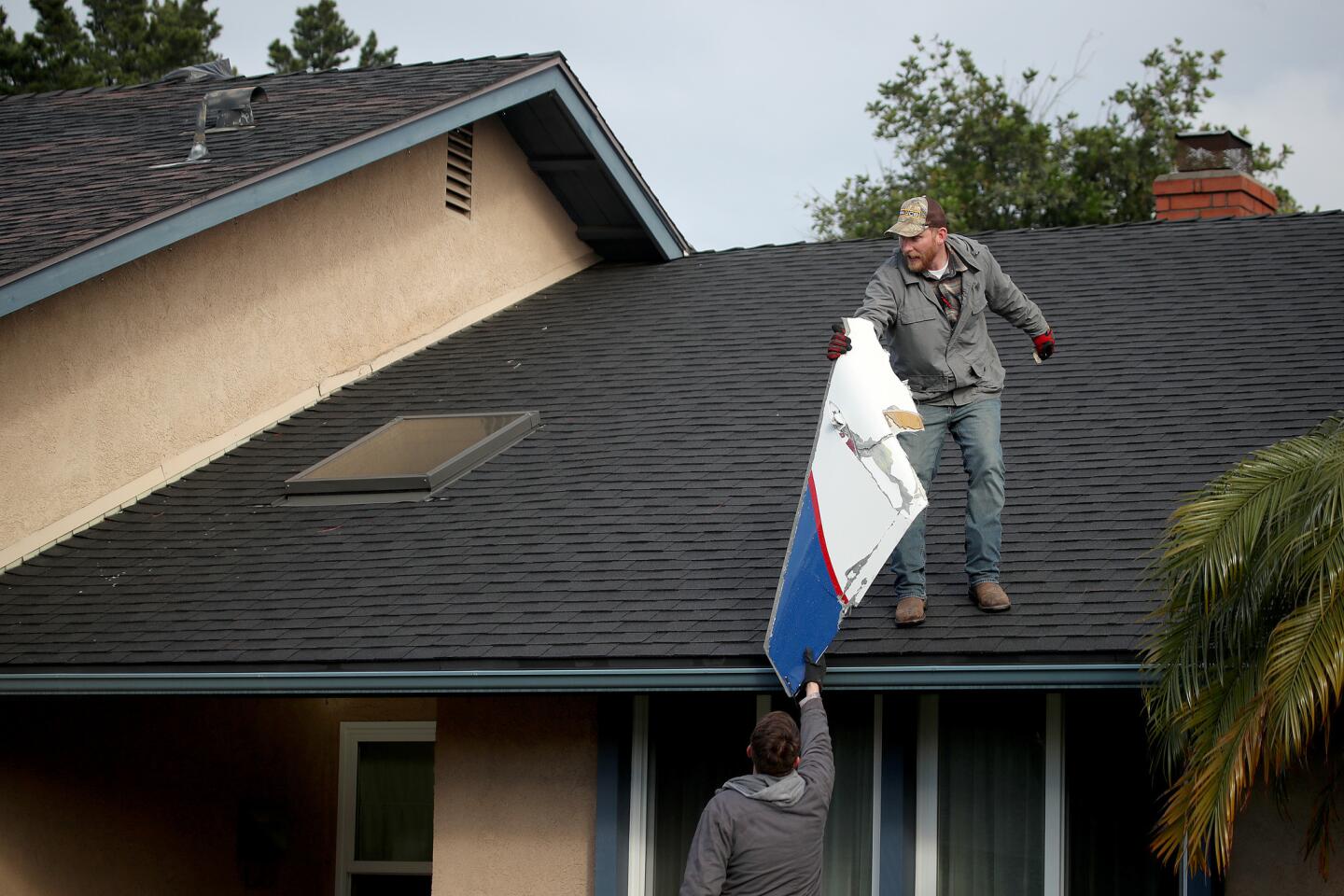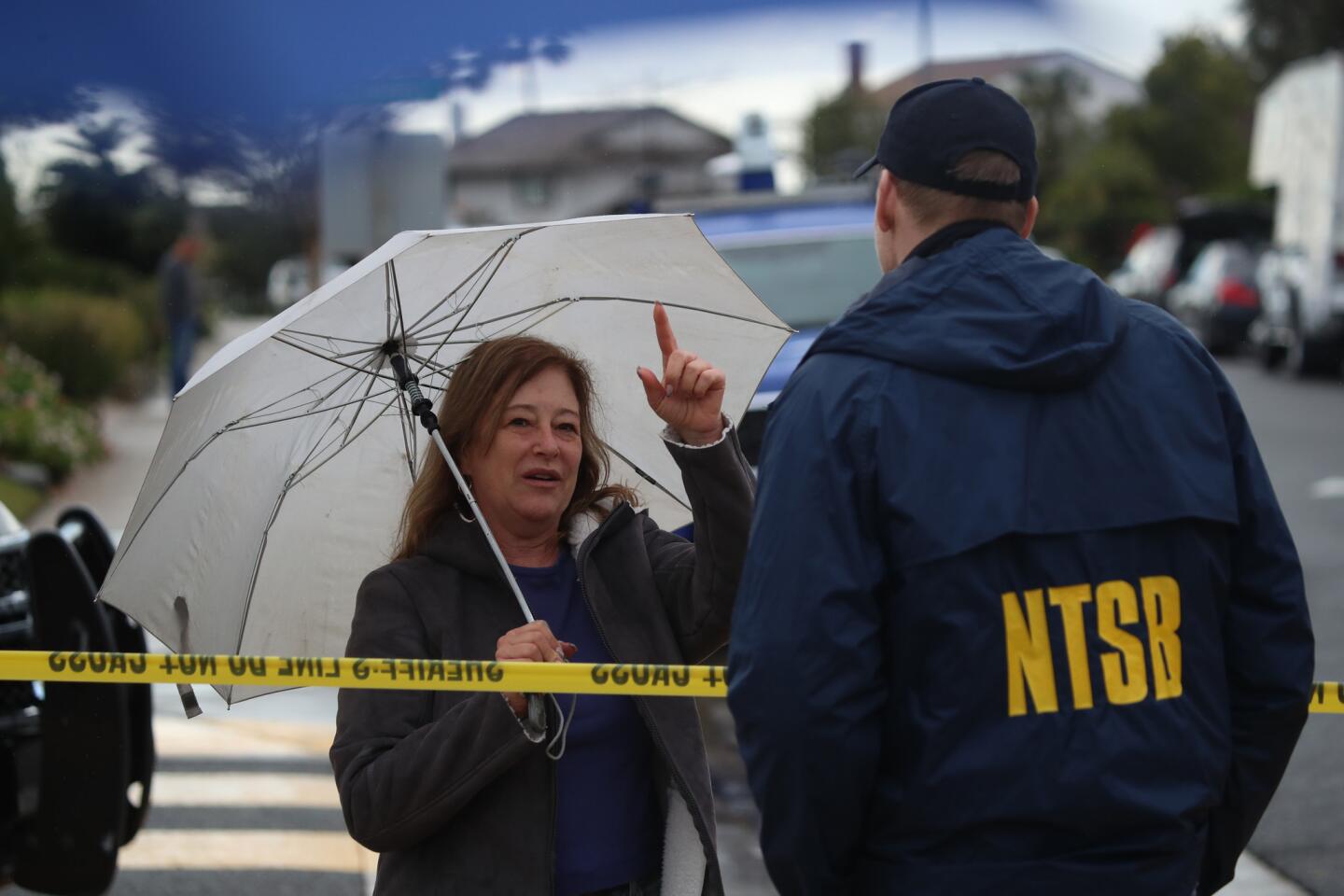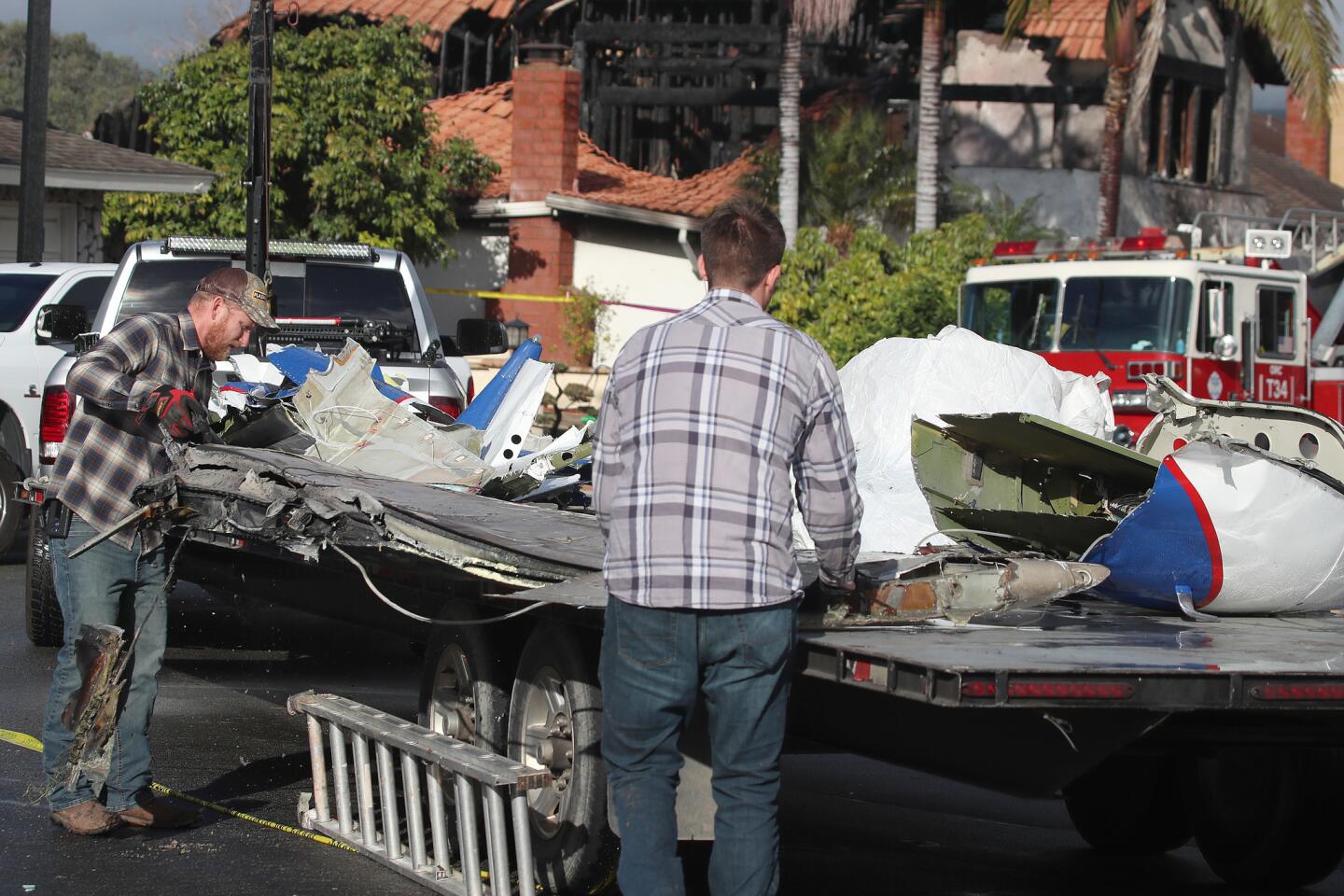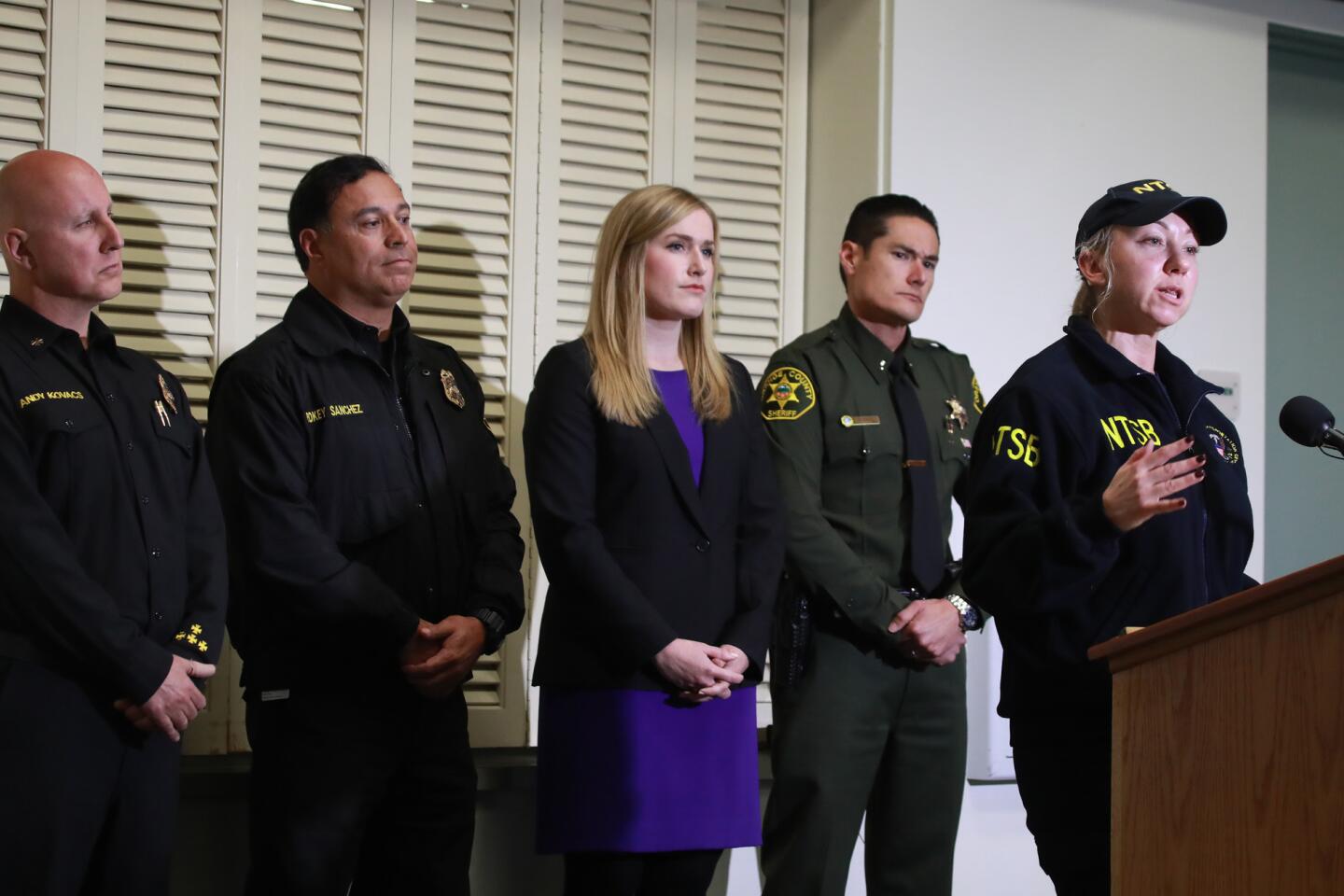Burning metal rained from the sky, bringing death and questions in Yorba Linda
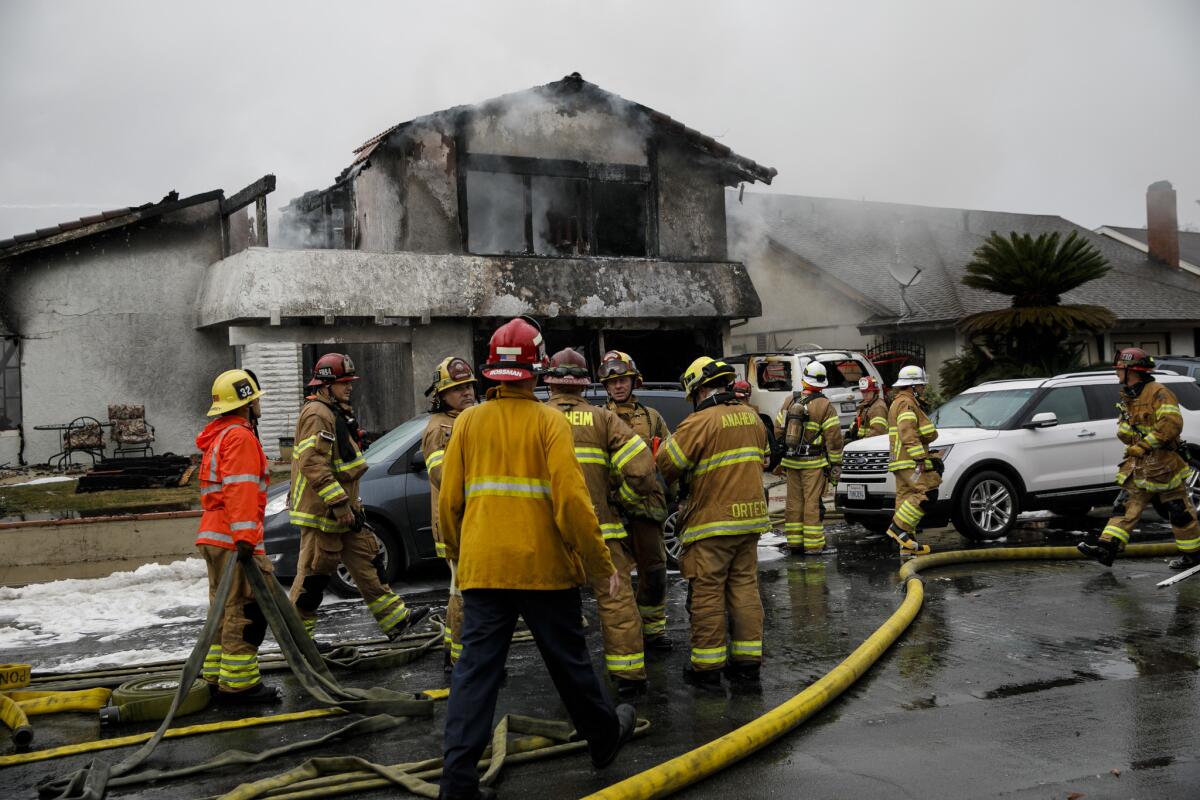
- Share via
On a blustery Sunday afternoon, a strange wailing caught Susan Bacha’s ear, followed by a thunderous crack. She took the sound to be one of the street’s regular speeding motorcyclists finally taking the corner too fast and slamming into a car.
The Super Bowl was less than two hours away, and many of her neighbors on Crestknoll Drive were puttering about at home or preparing for a big game party.
Next door, the boom made Marcia Prichard, 83, look up from her newspaper. She figured it was thunder.
Through her window, she saw branches and debris tumbling down from her eucalyptus tree. Strange, she thought, maybe an earthquake. When she and her husband spotted fire in their driveway, he dashed outside fearing his car had exploded.
Instead he found a plane wing engulfed in flames.
A Cessna 414 had broken apart above their Yorba Linda neighborhood, raining chunks of burning metal over 16 homes on their block. The fuselage had chopped off the top of the Prichards’ eucalyptus and landed on the slope below their house. A propeller came to rest in a neighbor’s driveway. An engine lay on a front porch.
Three lots to the east, fire raged through a home with a giant gash in the middle of it.
The pilot of the Cessna 414 and four people in the fiery home were killed, and two other people were injured. The pilot was identified as Antonio Pastini of Nevada.
The four killed in the home were identified Wednesday by the Orange County coroner as Roy Lee Anderson, 85, of Yorba Linda; his wife, Dahlia Marlies Leber Anderson, 68, of Yorba Linda; Stacie Norene Leber, 48, of Corona; and Donald Paul Elliott, 58, of Norco.
Marcia Prichard’s husband, Paul, had no idea his neighbors were killed as he grabbed his garden hose to put out the flaming wing. The heat was so intense that it scorched his roses a couple of yards away. The smoke and fire up the street turned a light drizzle into a surreal steam.
How close they came to death didn’t hit them until later.
“When we started thinking about it, that’s when it started bothering us,” Paul Prichard said Wednesday.
“We look at that tree,” he said, pointing at the decapitated eucalyptus, “and say, ‘Oh my God.’”
Pastini took off from Fullerton Airport around 1:35 p.m and flew about 10 miles, reaching as high as 7,800 feet, according to the National Transportation Safety Board, when witnesses saw his plane on fire, plummeting through the clouds and leaving a black trail of smoke, authorities said. Moments later, its tail and wings came off.
At one home, an engine alternator torpedoed through a first-floor window, flying through two rooms before landing in a bathroom. Fragments of exhaust pipe crashed through a second-floor window and melted into the carpet.
Neighbors suspect the second wing, carrying a fuel tank, is what erupted in flames at the home where the four people died. It was the one big piece of the plane they didn’t see around the neighborhood.
Investigators with the Federal Aviation Administration and the NTSB combed through the wreckage Monday and collected pieces of the aircraft, which were being taken to a Phoenix storage facility. NTSB officials said the investigation could take 18 months.
Tom Anthony, director of USC’s Aviation Safety and Security Program, said video of the crash shows the “the aircraft broke up in air.”
“We can see fire and black smoke, and that suggests a lot of fuel,” he said.
Anthony said the aircraft’s debris field also reflects that this was a midair breakup and that the wreckage essentially fell in two areas. He said such breakups tend to be caused by pilots putting undue stress on the plane’s frame with high speeds, hard turns or drastic ascents.
Anthony said the age of the plane, a 1981 Cessna, is not as important as how it was maintained and flown over the years.
“It is important here for investigators to examine the maintenance and conditions it was kept,” he said. “How it was operated in terms of altitudes, speeds and G loads. If you put a lot of heavy G loads on a plane over time, it will stress the fuselage.”
Pastini himself is a bit of a mystery.
He was initially identified by California authorities as a retired Chicago police officer. But a spokeswoman for the Chicago Police Department said Pastini was never employed by the department and was carrying a Chicago police badge that had been missing since 1978.
Carrie Braun, spokeswoman for the Orange County Sheriff’s Department, said the metal police star recovered from Pastini’s body “appeared to be legitimate.”
It’s unclear how Pastini got the badge.
Braun said Pastini was born Jordan Isaacson and changed his name in the 1970s.
According to records, Pastini once owned a restaurant, Kim Lee’s Japanese Restaurant and Sushi Bar, in Gardnerville, Nev., south of Carson City.
A 1997 article about youth programs in the Reno Gazette-Journal described Pastini, then-owner of Kim Lee’s, as a retired Chicago police officer who had been, in his own words, on “both sides of the law, as criminal and cop.” He described being born in a melting-pot neighborhood of Greeks and Italians.
“We got along really well with the Greeks, but we didn’t get along with the Germans,” Pastini told the newspaper. “When we got into a fight, we used our hands and sticks. Now, they use guns and knives.”
At the time, he told the reporter that he was arrested on suspicion of grand theft when he was 14 and added: “I didn’t have a social worker when I got out. We didn’t have the bleeding heart, goody-two-shoes. We were bad kids and we were treated as such. We had discipline in those days.”
Another article in the Reno Gazette-Journal described him as a 17-year Chicago Police Department veteran who was a detective sergeant when he left the force in 1986.
Articles described Pastini as being involved with youth programs and charity efforts, including to help out the families of fallen police officers. A headline of one story read, “Ex-cop brings piece of Chicago with him.”
A daughter, Julia Ackley of Torrance, told The Times this week that her father was a veteran pilot who regularly flew from Nevada to Southern California to visit her family.
On Wednesday, Ackley declined to talk to a reporter when asked to explain why her father had changed his name from Isaacson to Pastini.
Residents of the neighborhood are just coming to grips with the freak nature of the disaster.
Most of them are older, the Prichards said, empty-nesters like them. Their own children — four daughters — are grown and have moved out. With them went some of the glue that held the street together.
“Years ago, when we all had children, we were all closer then,” Paul Prichard said.
The Prichards had only spoken to the Andersons a few times. They seemed friendly, often bringing the newspaper to the door of an elderly neighbor.
In the Prichards’ 46 years in the neighborhood, they have had periodic brushes with danger: a few evacuations from hillside fires, the raid of a neighborhood marijuana grow. That was exciting, Marcia Prichard said — she was even interviewed by the local paper.
While she feels terrible for the victims and their family, Prichard said, the randomness of the tragedy made it less frightening. They weren’t targeted by “some murderer or serial killer,” she said.
A plane simply fell from the sky.
Others had a different, visceral reaction.
On Wednesday, Louanne Brescini brought a bottle of wine for her friend, Bacha. The two were standing in Bacha’s doorway when a helicopter flew overhead.
“That puts a chill in my spine,” Bacha said, her voice hoarse from crying. “Anything goes over the house, and I’m like, ‘Should I duck under a table?’”
More to Read
Sign up for Essential California
The most important California stories and recommendations in your inbox every morning.
You may occasionally receive promotional content from the Los Angeles Times.
